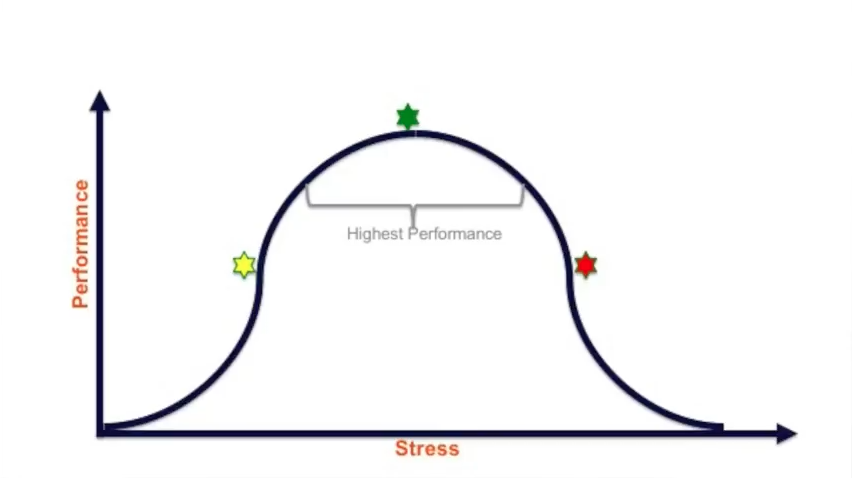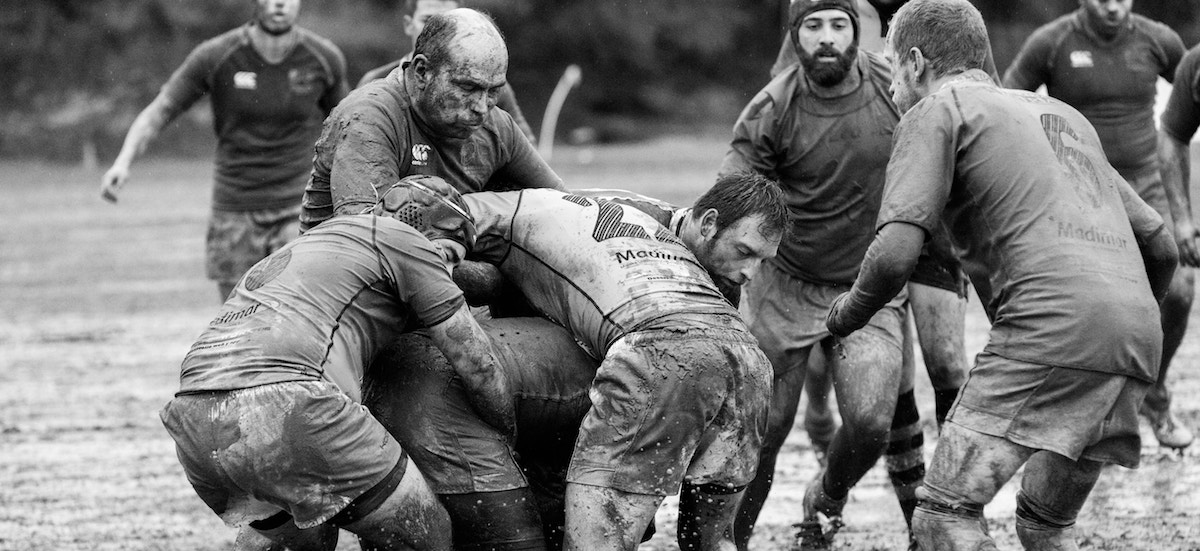Overcoming Negative Thinking by Learning to Love the Lessons
How good are you at seeing the benefit in your biggest challenges, at work and in life?
The key to overcoming negative thinking is learning how to shift painful experiences into lessons that help make you stronger and smarter - and turn a "woe is me" attitude into a "wow!!' learning mindset.
"I never lose. I either win or I learn." - Nelson Mandela
Now really think about that: I win, or I learn.
There is no losing in life. There is no failure in life. You can just have some really, really expensive learning experiences. And I've had tons of them. When you see that, in every situation, you're going to learn something or gain, no matter what, you tend to let go of your resistance, and find a way to move through it, to get on to the next thing.
Key Point - Appreciate the painful experiences that make you grow stronger and smarter. If you take a look back at the most painful, excruciating experiences that you've had, those are the ones that developed your character. Those are the ones that made you smarter and more capable, and more determined, and more resilient.
Unfortunately, for most of us, when we're in the middle of those situations, we dread them, we hate them, and we try to wish them away. When the reality is that those are the things that we need to make us stronger.
The main distinction in this chapter is ‘woe versus wow’. Whenever you're saying, "Woe is me. Why is this happening? This sucks. It's not fair. Why, why, why?", no good will happen. You are resisting the problem that you're having and, truly, if you're seeing it as a problem, you will go nowhere. Your creative mind does not find ways to solve it. You're just putting energy into staying where you're at.
The challenge is to train your brain and build the discipline, in almost every situation, to quickly switch to ‘wow’.
"Wow, this is brutal. This is intense. This is crazy. This is hard. But I know – some way, somehow - this is good for me. I am going to be better for it." Said differently, the quicker you can go from seeing a problem as a curse to a gift, then you can find the value, and move on.
There's a real psychological benefit to this, as well. As human beings, we love to - and need to - see the value or purpose in things. So if I'm going through some excruciating pain and I don't see any value in it, I’ll feel bad and it’ll to drain me. But, in the same situation, if I get my mind around it, get my heart around it, then I start feeling better about drudging through all these challenges.
You need to work on this if:
- You easily get stuck in ‘woe’ thinking about past struggles, even though they probably did make you stronger. You're still looking back and saying, "Oh, that wasn't fair. That wasn't right."
- When the new struggles arise, your mind quickly starts to produce thoughts of ‘woe’, and about how challenging your life is, and how you wish things like this wouldn't happen to you.
- You don't get your lesson. You keep facing the same kinds of struggles, again and again, and again, kind of like Ground Hog Day.
- When obstacles do arise, you get stuck and don't move forward for a long time.
- You're generally unaware or in disbelief that 99% of your story about any challenge is pure fabrication.
This last point is very important. In any situation, there are usually two or three facts - and then a whole bunch of stories, opinions, and other things that we wrap around it - but at the core, we always apply meaning to situations.
By the way, we have a choice about the meaning we apply to a situation. You can look at your car getting a flat tire as an amazing gift or an amazing curse. From a fact point of view, is a flat tire good or bad? There's no data to say one way or the other. The truth is a flat tire is a tire without air. That's it - and you can make up a hundred different stories about it.
As a leader, look for the good story about it - how it adds value, and how you grow stronger from it. Otherwise, as a leader, when you deal with hundreds of challenges in the week, you'll get beaten up and destroyed if you see every single one as being negative, through the perspective of a victim with a "woe is me" mindset.
The Challenge
- Think about a situation that you're currently in that's driving you crazy and burning a ton of energy. Odds are, you're in a ‘woe’ mindset, and I'm not judging you for that. It's a normal human reaction.
- But what I want you to think about is, how do you get to a ‘wow’ mindset? In the grid below, list your current challenges:
- What's your ‘woe’ story - the story you're telling yourself right now?
- What's the ‘wow’ story?

As simple and as cheesy as this might sound, they're both just stories.
If the ‘woe’ story is keeping you stuck and not making you feel good, why don't you come up with a ‘wow’ story to get you moving forward and feeling good? If this is a habit that you really see value in mastering, it might be your number one habit for the quarter.
Summary
Woe to wow: When it comes to all the challenges we get in life, if you truly love the lessons and have a, "Wow, this is painful but amazing in some way," it will be easier for you to tackle these challenges, and you will grow stronger the more you get beat up by life, rather than beaten down.
Tackle Difficult Conversations
We've all faced difficult conversations in our lives. The best leaders find effective ways to deal with them – and the people who are ineffective, let the important ones slide.
Now, some stuff you do need to let slide. That's understood. But there are high value, important conversations which must be addressed - and if you don't, you take a little problem and make it big.
How skilled are you At quickly giving tough feedback?
"I prefer an ugly truth to a pretty lie." - Shakira
There are many people in the world who would rather have you just to lie to their face, and tell them everything is fine.
As leaders, we want to make sure that we continually let other people know what they're doing well, and dealing with the tough situations that are going to keep them from growing and evolving. As leaders, we're often the only ones who have the ability or the insight to share these challenging things with other people on our team.
The main principle here is to tackle all of your difficult conversations in 48 hours. Not four hours - because if you tackle them right away, you're likely to be emotional. And as we talked about in the other chapters, emotions lead us to problems.
Key Point - Deal with these situations quickly, but not so quickly that you stick your foot in your mouth or make the situation worse.
You need to work on this if you:
- normally say nothing when things go sideways
- explode when people anger or disappoint you
- let little frustrations build up until you reach a breaking point and then irrationally fire someone to just get rid of them
- find that people get defensive or emotional when you give feedback.
In all of these cases, either you're not dealing with it yourself, or you're not skilled in dealing with it with other people.
A Model for Difficult Conversations
Years ago, I was taught a brilliant concept that I call the tough conversation model. It is a wonderful way to approach the most challenging situations that you have. – and it will shock you how effective it is.
Here are the four steps:
- Ask permission - Make sure the person is ready to have a conversation. Something like, "Hey, I've got a bit of a sensitive discussion we need to have. Are you available for us to chat about this?” You're just making sure that they're in the state of mind to actually have this conversation. Don't just barge in and do it.
- State the indisputable facts in about 20 seconds - There are very, very few facts in any situation. Usually, we end up sharing opinions, judgements, things like that. We don't want to touch those. Only share the facts.
- Share your feelings about the situation - These are nonjudgmental feelings that are about you, not about the other person. These are your personal feelings: your frustration, your anxiety, your concern, your worry, your excitement, your disappointment. Ideally, stay away from judgmental phrases. This is only about your reaction. In both the facts and the feelings, they should be things that people can't argue with.
- Suggest a resolution. Introduce a couple of outcomes that might work.
The reason why this model works so well is you get away from tossing out opinions or creating arguments. You're just laying out facts and feelings and then talking about solutions.
The Challenge
- Have one of the tough conversations that you need to have and do it in the next week.
- Fill out your thoughts on each of the four steps in the tough conversation model so that you're well prepared.
When there's tension between people, you can feel it. You know it. They know it. But it takes one person to step up, be the adult, and put the conversation on the table, in a respectful way. Talk about it, clear it up and move on.
Clear Expectations Help People Meet Your Standards
How skilled are you at setting clear expectations and graciously getting people to meet your high standards?
Truth be told, the most successful people generally have the highest standards - that's why their customers trust them to supply their companies. The downside of having really high standards is it can create friction and frustration with the people that work with you. If the standards of the people on your team are lower than yours, it creates a gap.
That's part of the leadership puzzle. The challenge is to figure out how to close the standards gap so you deliver what you want, and please the customers that your company serves.
"Have no fear of perfection, you'll never reach it." - Salvador Dali
The most successful leaders I work with are often perfectionists. They are perfectionists in that they always want things to be as good as they can be, and they're usually just fighting the clock to get the highest quality they can, with the time that they have.
For those types of leaders, instead of backing off and fixing things themselves, or accepting mediocre-quality work, the key is finding ways to teach their people how to deliver what they expect - to get what they want with a lot less friction.
Set Clear Expectations
Great people really do want to find a way to meet your exceptionally high standards. High performers want to deliver high quality work. The problem is that we, as leaders, often fail to let them know exactly what we expect. As a result, they're left guessing, and hoping, and wondering - and that's just a waste of energy.
Starbucks has done an amazing job of training the world how to ask for exactly what they want in their coffee, right down to the temperature they want it to be. The point of this is that we all have preferences, but we need to make them known. Otherwise, we don't get what we want, and other people are robbed of the opportunity to completely please us, to thrill us.
You need to work on this if you:
- hesitate to say what you really want because you don't want to seem demanding to your people. Or, you've had bad experience from being like that in the past.
- often accept results which are less than you expect.
- fix things yourself so that they meet your standards, and don't push the work or the repair or the edits back to your team
- notice the same frustrations keep happening with the same people
- regularly make do with less than ideal situations. You either tolerate things or accept results that just really aren't what you had in mnd.
It's okay to make smart compromises on things that don't matter. The key is to stop making compromises, or fixing things yourself, on things that are important.
Always Do, Never Do
There are many tools in this chapter that will help you master this principle. The simplest one is the "Always Do, Never Do" list:
- Make a list of the five things that people should always do, and never do.
Here's how it works.
You've heard stories about rock stars that only want green M&Ms, or only want a certain colour flower in their dressing room before a big performance. We're not talking about things like that. We're talking about the general, everyday things that you really prefer that people do, or don't do.
For example, for me, there are a few things that I always tell people that work with me. One is what I call my 24/7 rule. If it's a task, it should be completed in 24 hours. If it's a small project, it should be completed in in seven days. And my expectation is that they're done in those time frames without me even specifying or asking. My team should just know to turn things around really quickly.
What do you wish that people always did, or never did, that it makes it much easier for them to work with you? This list should result in both of you ending up being a lot happier, and getting what you want.
Summary
The people that work with you do want to please you, and give you what you want. But if you don't tell them - right down to some of the very specifics - they're often going to be left wondering. And, as a result, wasting time and energy, doing things that don't matter when they could be doing the things that do.
Stress Performance Curve - How Stress Makes High Performers Better
Although it sounds counter-intuitive, high performing CEOs and managers actually need stress to be their best. The key is to understand and work in that optimal area of the stress performance curve - where you maximize performance at a level of stress that is manageable for you.
I wanted to share with you one of my favorite quotes from my book Your Oxygen Mask First:
There is no in-between with leadership. It either slowly destroys your life or it forces you to get stronger.
Now, that might not seem like a positive or motivating quote, but it's the truth. The challenge of building an enduring, great company and doing something amazing in your career is that it takes a big toll on you - and that can be painful; it also could be an absolute blast if you do it right.
Here is another quote from the book about work-life balance, which I think is an absolute silly concept, but here is the way I like to see it:
You don't go to the amusement park roller coaster, and say, "I want to be balanced." No, you want to be as unbalanced as possible because that's the thrill of the ride.
High performers like it when it gets a little bit easy and settles down - to catch our breath - but then we get bored and want to do more. So, this is about making sure there are continual challenges.
Stress Performance Curve

There's a beautiful model* I have found that helps to illustrate what we're talking about here. On one axis is the level of performance, and on the other, the level of stress. Maximum performance comes at this intersection of the optimal amount of stress and what works for you (the green dot in the middle).
Now, this chart is not stable: it moves around to the left and to the right. If you go down and see the yellow star, that is safe place, an easy place. There's not a lot of stress, and there's also not a lot of performance. It's just like a race horse.
Race horses needs competitors to run their fastest. They often cannot run their best if they just out there by themselves. If you look at high performers, there's not enough stress or competition for them to really feel that performance anxiety that brings out their absolute best.
Go for the green
Now, if you look over at the red dot, the red dot is too much. That's the point where the stress starts to kill the person by destroying them on the inside. They can handle it for a bit, but there’s a point where they need to learn and grow to be able to handle it - or maybe it's just a situation that's too much.
As high performing leaders, we want to get in that highest performance zone - right around the green dot - and stay there. Unfortunately, it gets way too much, "Oh my gosh. I feel like I'm gonna die. It's destroying me," to not enough and, "I'm bored."
So, I always ask high performers, or A Players: "Hey, how is your level of challenge?"
If their eyes roll in the back of their head, I know they're in the red zone. If they're smiling and engaged, sitting forward, they're probably in that green zone. And if they're kind of, "Well, you know, I'm getting kind of restless, looking for another challenge or opportunity," I know they're in the yellow. As leaders, our job is to keep pushing them there.
What do you do when they're in that red place?
Double Your Capacity
This is where the learning, the growth, and the development comes in. If you're using the same skills you used five or 10 years ago, you won't be able to handle more stress and challenge. What you need to do is to learn your way out - to keep moving that green dot out, and out, and out, so that your performance level goes up, and the amount of stress and pressure you handle also goes up.
Essentially, that's what all of the 17 habits are about, in my book - 17 habits to help you to mentally and mechanically handle more pressure and challenge, so that you can rise up to your goals, achieve what you want, and still enjoy the ride.
The key point of all of this is that you need to double your capability every three to five years to deserve the designation of leadership. You do that through growing what you know, who you know - and your own resilience. If you don't, even if you may want more responsibility, it may start to slowly destroy you, and that's not fun. Now, if it’s only for a few months, it's fine - work on some strategies, improve, and get better.
The Challenge
- If you haven't already, do the Your Oxygen Mask First Self-Assessment.
- Rate yourself on those 17 habits and then figure out which one you need to work on next.
- After you do the assessment, you’ll be directed to videos on each habit - these will help walk you through some detailed action items to follow up on
The final thought I'll leave you with is for you and your team: If you're finding people are floundering - where that red dot is, where it's just too much - go back, and ask the question:
"What do they need to learn or change to be able to rise up to that level?"
Not, "What do we need to do to reduce the pressure?"
Our job is not to give and take more pressure, but to learn better skills to do it.
If you have any questions, leave a question here. All the best.
* This is based on the Yerkes-Dodson law which refers to a relationship between stimulation and performance.
Day 1 Amazon Thinking
The essence of Day 1 Amazon Thinking - described in Bezos’ 2017 shareholder letter - is how the people at Amazon keep the company fresh by maintaining a customer-oriented focus.
Day 1 describes the fight and fire and determination you have to do all the best things for your clients. Strong in the beginning, it often fades over time as you become more self-oriented versus customer-oriented, which can weaken your business, and really end up hurting you.
Day 2 is stasis, followed by irrelevance, followed by excruciatingly painful decline, followed by death. And that's why it's always Day 1. To be sure, this kind of decline would happen in extreme slow motion - an established company might harvest Day 2 for decades - but the result would still come.
I'm interested in these questions:
- How do you fend off Day 2?
- What are the techniques and tactics?
- How do you keep the vitality of Day 1 inside a large organization?
Such questions can't have a simple answer. There may be many elements, multiple paths, many traps. I don't know the whole answer, but I may know bits of it.
Day 1 Amazon Thinking Essentials
Here's a starter pack of essentials for Day 1 defence - and Bezos gets into these four points and measures, which you can read about in more detail in his letter – and which make a great self-assessment, for you and your team, when you're doing your next planning session:
- Customer obsession. It's about being obsessed with pleasing the customer and knowing that they're always happily dissatisfied - meaning there are more things that they would like or enjoy, but they don't even know yet. So, there are always huge opportunities to please them. And if you watch Amazon, they continually release new products and services that make you thrilled if you're a customer. So, here’s the question for your team: On a scale of zero to 10, how would we rate a true customer obsession, compared to this Day 1 thinking?
- Outcome-orientation. Bezos says that many companies, as they grow, become process-orientated e.g. "We're doing the work, we're doing the project, we're revising the policy, we're implementing the system," but they forget to measure, "Did we get the dollars and cents out of it? Or the results we actually required?" When you're a start-up, it's easy because you have no cash, and everything has to work - but when you get bigger, with more resources, people often start to focus on doing the work versus getting the result. I see this in companies all the time: people are doing good work but because the finish line is not clear enough, they sometimes don't get there.
- Early adoption of trends. Those of you who know me, know I love trends and seeing what's coming next - that's part of feeding our strategic brands. But what Bezos talks about is not resisting change and eagerly trying out new things. You don't need to be the first, you don't need to be on the bleeding edge of innovation, but you need to do enough to continually adopt change, embrace it and be part of it.
- High-velocity decision making. Bezos talks about how, as companies get bigger, with more stakeholders, it's easy to get lost in debates while trying to make the right decision - or the perfect decision. This fits into what Jim Collins calls "bullets versus cannibals." Let's do bullets and tests and keep moving versus waiting for the one big move - or moving too quickly on the one big move. But he asks, “How quickly are we making the important decisions?”
In another article Bezos talks about type A and type B decisions:
- Type A is a two-way door. You can make the decision and you can back out of it. With that, you should decide very quickly because it's easy to reverse.
- Type B is a one-way door. You sign a massive contract for 10 years or make a big, long-term commitment - and that needs rigorous debate and more information.
Many companies make type B decisions, using a hardy decision process to answer a simple question, or they'll use late decision-making for a hardy one, and that obviously becomes a problem. The key question is "Are we making our decisions very quickly, so we can move and take care of the customer?"
Summary
- Day 1 thinking keeps us fresh, keeps us vibrant, keeps us taking care of our customers, and actually makes your company a more enjoyable place to work because stuff happens.
- Day 2 is easy to fall into because we get comfortable, and that’s extremely risky. Never mind the fact that it's not rewarding.
Work Your Best Laid Quarterly Plan
“Give me six hours to chop down a tree, and I’ll spend the first four sharpening the axe.” - Abraham Lincoln
Half way through the year already! I hope you are halfway to meeting all your goals for the year, and ready to tackle the next six months.
Plan, Plan and Plan Again
Time is finite. You need to know exactly where to invest your hours and energy to get the results you actually want. You need to know which opportunities to focus on now, and what to let go or mark for the future. Without a plan, it’s far too easy to get distracted and focus on too many things at once, spreading your efforts thin and achieving fewer goals. (Your Oxygen Mask First, Chapter 17)
In my book I talk about the importance of a solid, one-page Master Plan for your work, self and life – and mapping out mid-range and near-term goals every quarter.
It’s now time to stop, reflect and assess what you’ve achieved, so far this year, and to figure out what you need to do for the rest of 2018
Coach Kevin’s Challenge
Download the Quarterly Plan worksheets here or refer to pages 97 and 98 of my Your Oxygen Mask First Workbook. Block out 30 minutes.
PAGE 1: In the first 10 minutes, reflect on your work, self and life in the last 90 days.
Think of this as your report card, self-assessment or personal performance review.
- List the biggest achievements in work, self and life in the last 90 days.
List the biggest challenges or disappoints and note why.
- Passion ratio: How much of your best energy or passion did you invest in work, self and life?
Think of a tank of oxygen you would use to climb a mountain: how much (what percentage) did you breathe for work, self and life? This isn’t about showing up – this is about dedicating your best thinking and energy:
- What would have been ideal to be your best?
If you were happy with what you did, you might pick the same numbers. But if you don’t feel right about it - think of this as a recalibration exercise - how much would you have ideally dedicated?
- Constant Improvement: What do you need to start or stop keeping doing to stay on track?
- Look back to your Master Plan to what you want to achieve. What do you need to adjust? Think of it as a chef seasoning a dish – little more salt a little more pepper…
PAGE 2: Plan for the next 90 days
- Based on your reflections, how much of your best energy do you want to spend on your work, self and life?
For me, this is different in summer. Since I spend the majority of my time with my family, I spend more on life. I’m going to run 40/20/40 on work, self and life, during this time – very different to my normal of 70/10/20.
- Your #1 project: If you only had one goal this Quarter, what is the single most valuable thing you can achieve in the next 90 days, for work, self and life?
So, basically, you have three goals.
- What else is important?
if you have extra oxygen, when #1 is done, what else would you do?
- Toads: What are the little, non-strategic things you’ve been procrastinating on that are weighing you down? (Chapter 5 of Your Oxygen Mask First)
- Habit to start: What do you need to improve on this Quarter and how?
Look at the 17 habits in the book, or re-do the Self-Assessment, to help you figure it out.
- Download the Self-Assessment
- Short videos on the 17 habits
- Stop: Based on your goals, if there’s one thing you’re going to stop doing, what would it be?
- Actions: Now you have a plan, what are you going to do to get a jump on it? List 3-5 actions that you will make happen today or tomorrow to get a jump start on your goals for Work, self and life.
Hope you had a great quarter and that the next 90 days are incrementally better.
Make it so!
Best,
Kevin





